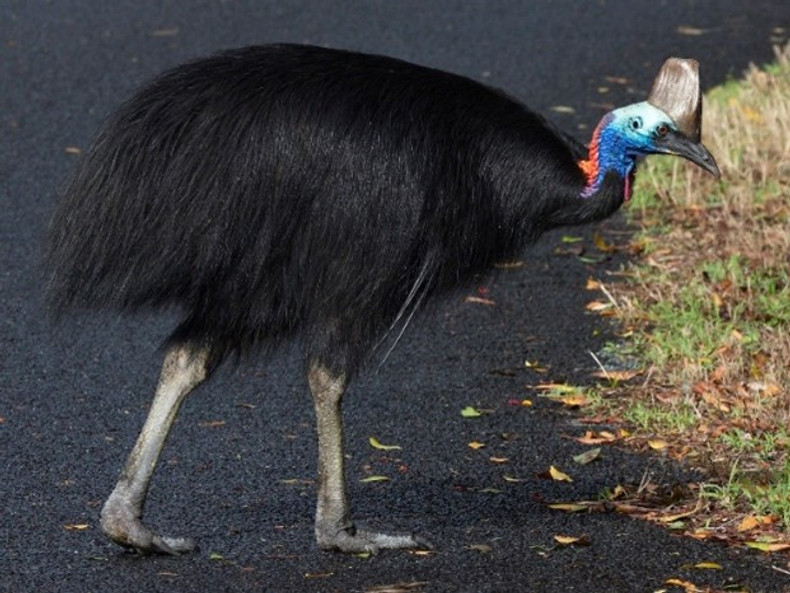Birdlife Queensland is collaborating with Charley’s Chocolate to identify ‘Charley’s birds’
In 2022 Charley’s Chocolate expanded its facilities at Mt Enda to include a lease on 80 hectares of Mt Edna’s endangered tropical lowland rainforest.
Charley’s is a cocoa grower, chocolate manufacturer and tourism destination. As an environmentally conscious enterprise, Charley’s contacted Ceri Pearce, the convenor of BirdLife Northern Queensland, to see if they could assist with identifying the birdlife at Charley’s. An enthusiastic yes was received.
The initial bird survey was completed on Sunday 4th September 2022. Forty-three species and 175 individuals were recorded. There will be follow up visits to identify more species.
Learn more about the birds on our previous blog post - Charley's birds
Birding at Mt Edna – the project
This project involves Ceri Pearce and Sandra Christensen of the volunteer group Birdlife Northern Queensland.
The first birding visit forms the initial list that was entered into Ebird.org - an initiative of Cornell University with the collection methodology being the Birdlife Australia Standard. Sandra and Ceri will do subsequent visits to Mt Edna to capitalise on the changing migratory and breeding cycles of the birdlife of FNQ
Charley’s birding track
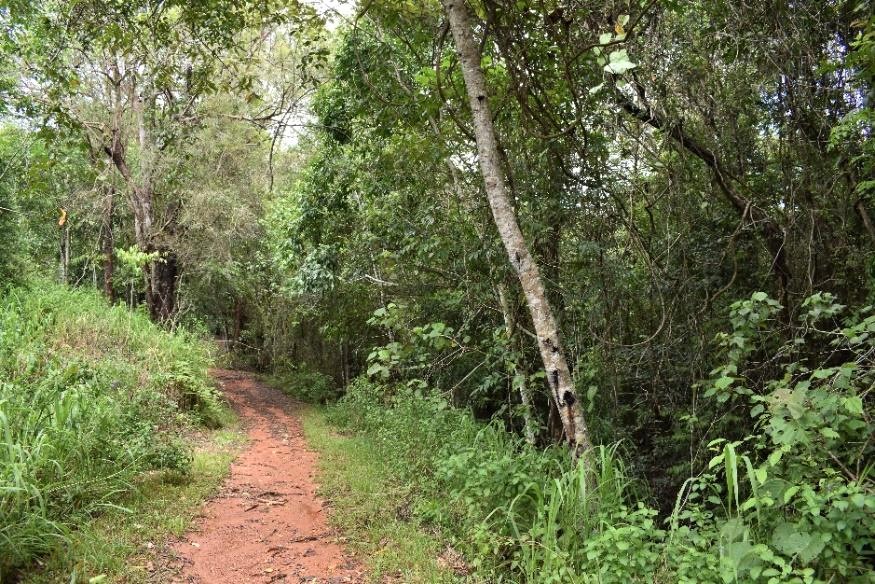
The second visit from Birdlife Queensland occurred on November 5th, 2022 when 42 species were identified. Eleven of these were not species detected on 4 September visit.. So, all up, Ceri and the team have 54 species identified to date. This is 338 birds in total.
The highlights were an immature cassowary and 3 new species of raptor
The new finds
1.Southern Cassowary - Casuarius casuarius
Enormous flightless bird with dark glossy plumage and large, horn-like plate on colorful head with two red neck wattles. Unlikely to be confused with other species. Hatchlings are brown and strongly striped. Juvenile and Immature birds are similar to adults but browner and with an absent or developing head-plate. Found in dense tropical rainforest, where it can be seen crossing roads, or along roadsides.
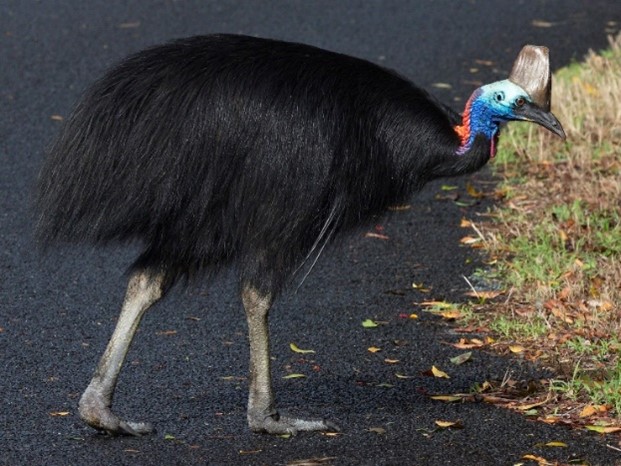
2.Whistling Kite - Haliastur sphenurus
Large sandy-colored raptor. In flight it has a strong underwing pattern, and holds its wings in a bent M-shape. Tail is relatively long and slightly rounded. Calls loudly with a distinctive repeated whistle. Common along coasts and waterways where it scavenges for fish.
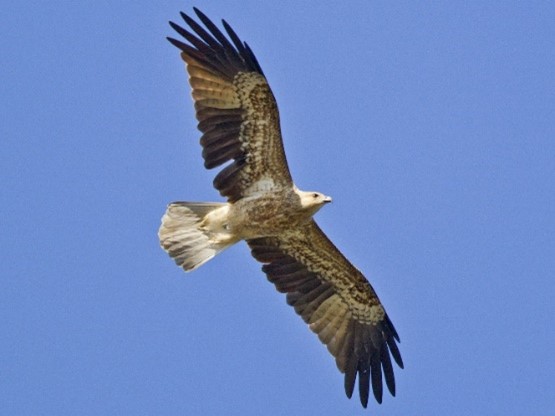
3. White-bellied Sea-Eagle - Haliaeetus leucogaster
Enormous grey and white raptor that soars with wings held in strong V-shape. In flight note black and white underwing pattern, short tail. Juvenile is much browner and can be confused with Wedge-tailed Eagle, but note mostly pale and fairly short tail. Predominantly found along coastlines, as well as estuaries and inland waterways.
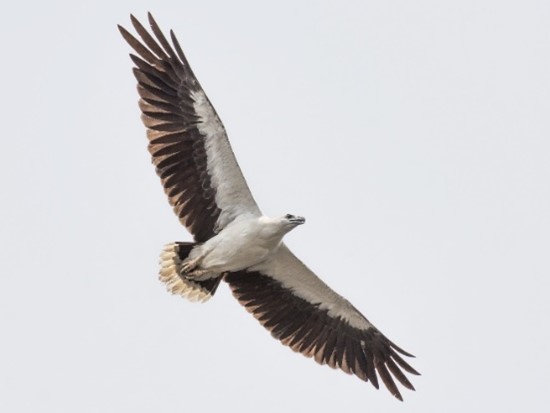
4. Pacific Baza Aviceda subcristata
Conspicuous medium-sized hawk with broad paddle-shaped wings that pinch in close to the body. When perched it is easily distinguished from other species by small black crest on the back of grey head and enormous yellow eyes, prominent brown stripes on white belly. Often found in suburban areas. Crashes into foliage to snatch insect prey. Has distinctive "mee-choo" call.
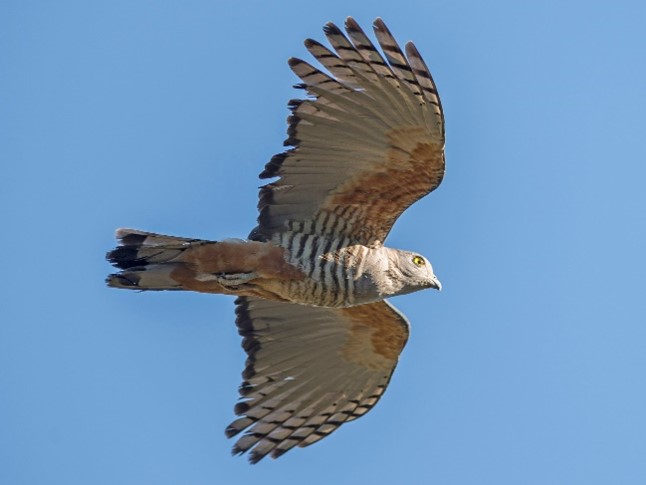
What’s the most seen
Notable additions this morning were immature Cassowary, 3 Sea Eagles, two of which were immature (so breeding success locally for both species).
While we detected less pigeon species, we did see the migratory Torresian Imperial Pigeon, now in our area having travelled from Papua New Guinea, and the beautiful Wompoo Pigeon, both of which weren’t detected first visit.
Other additions were Little Bronze Cuckoo, two more raptor species (Pacific Baza and Whistling Kite), Cicadabird, White-breasted Woodswallow and Torresian Crow.
It was pretty windy this morning so the small birds were no doubt hunkering down, and as discussed, Greg didn’t bring his camera as there was a high likelihood of rain.
Thankyou for the opportunity to visit. We had a lovely time exploring looking for your birds.
cheers
Ceri Pearce -BirdLife Northern Queensland

